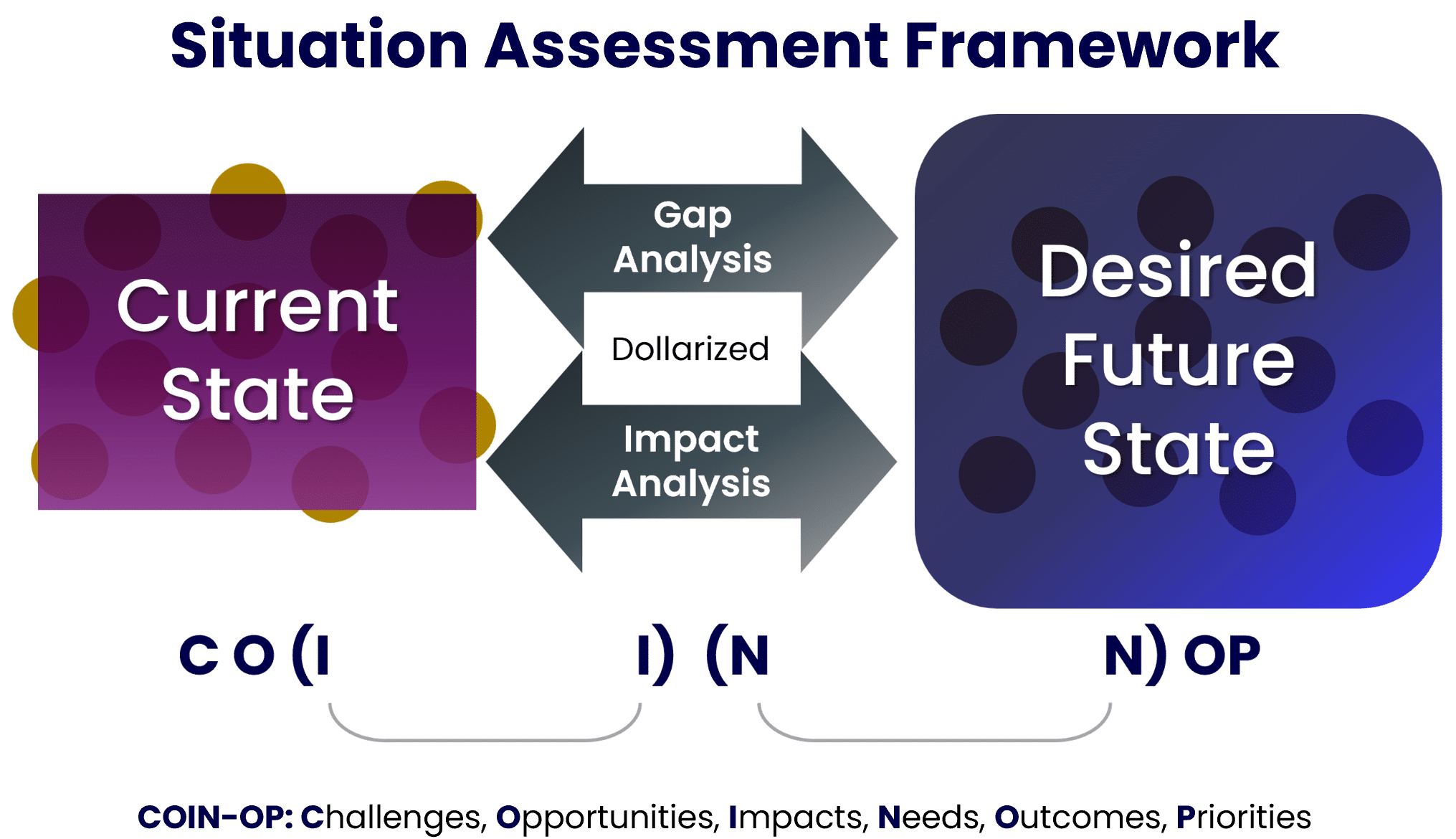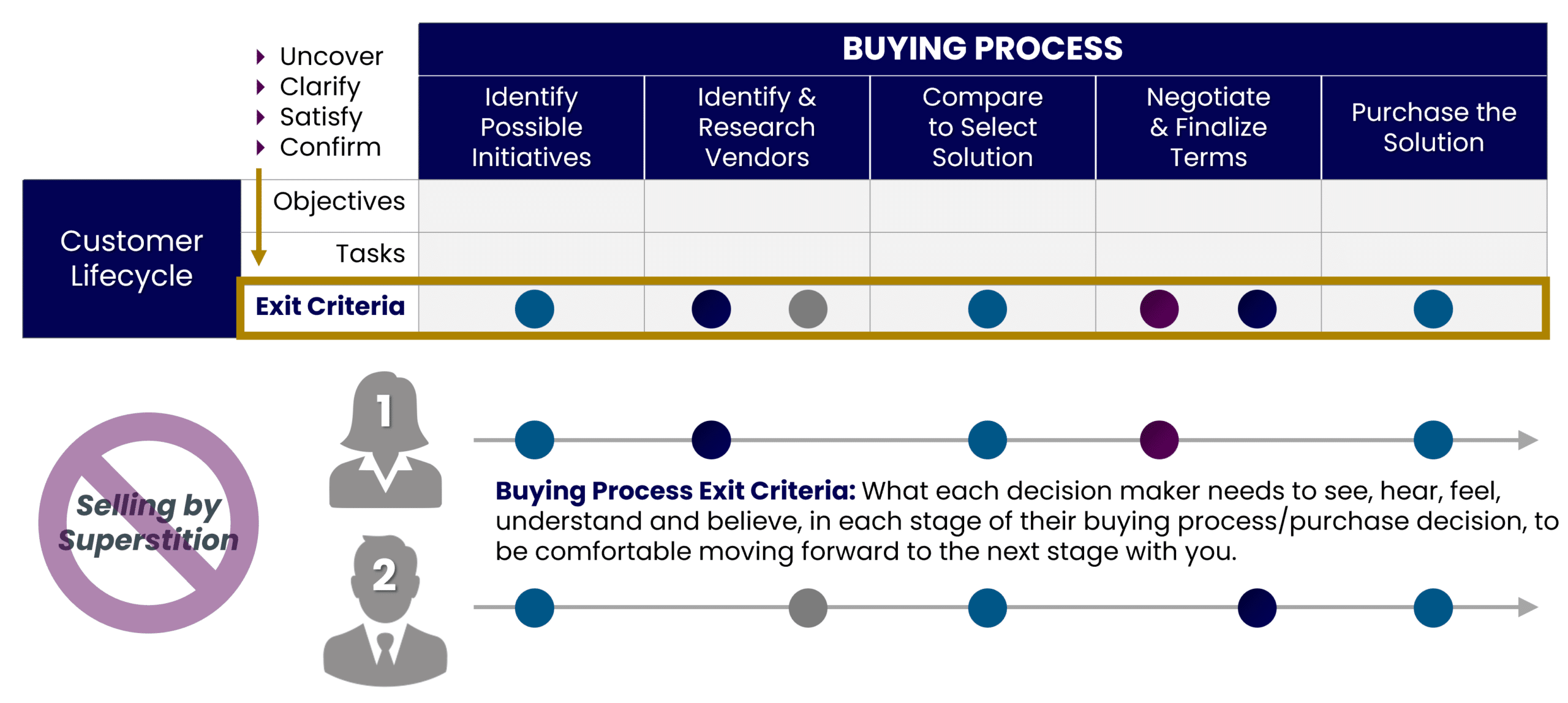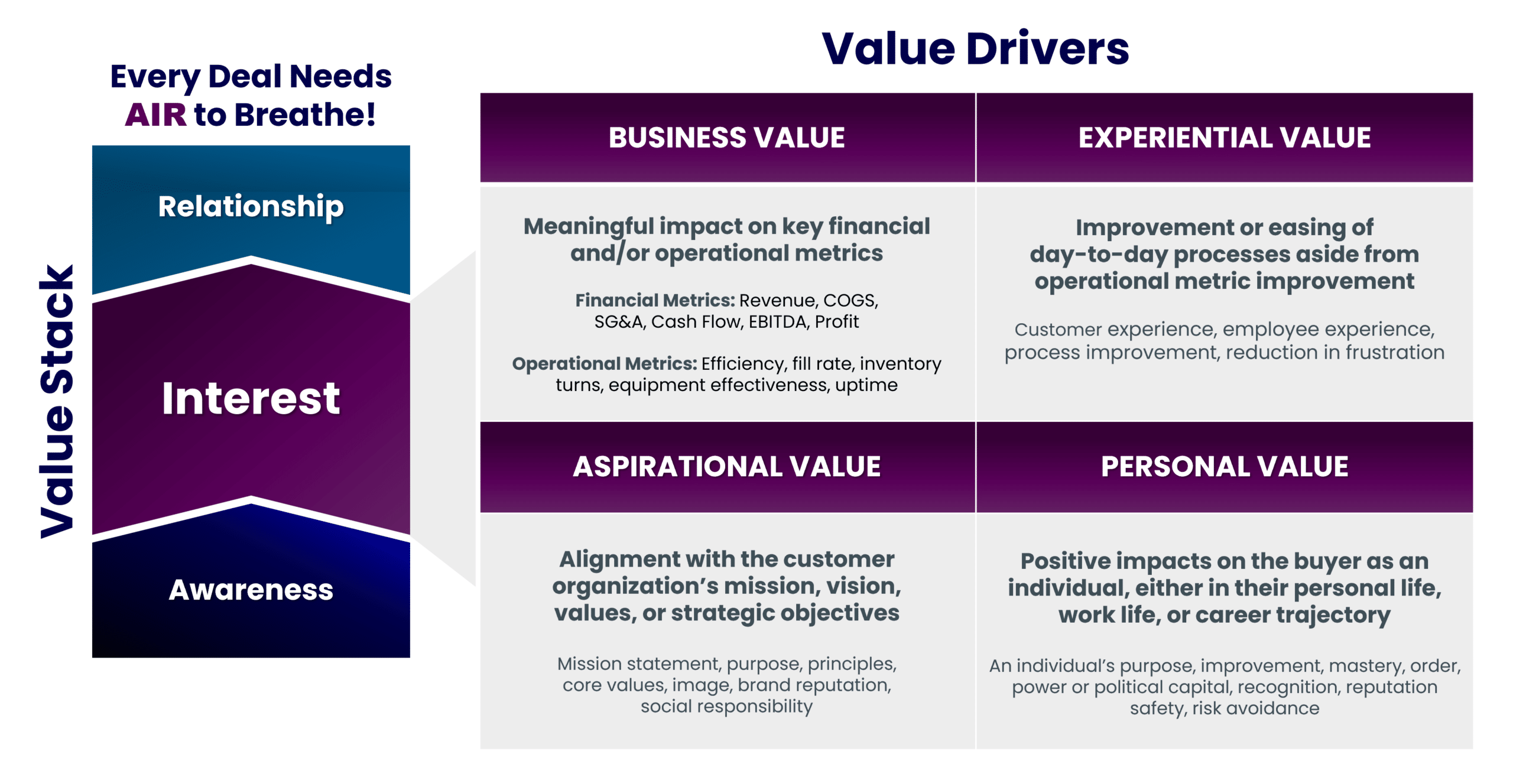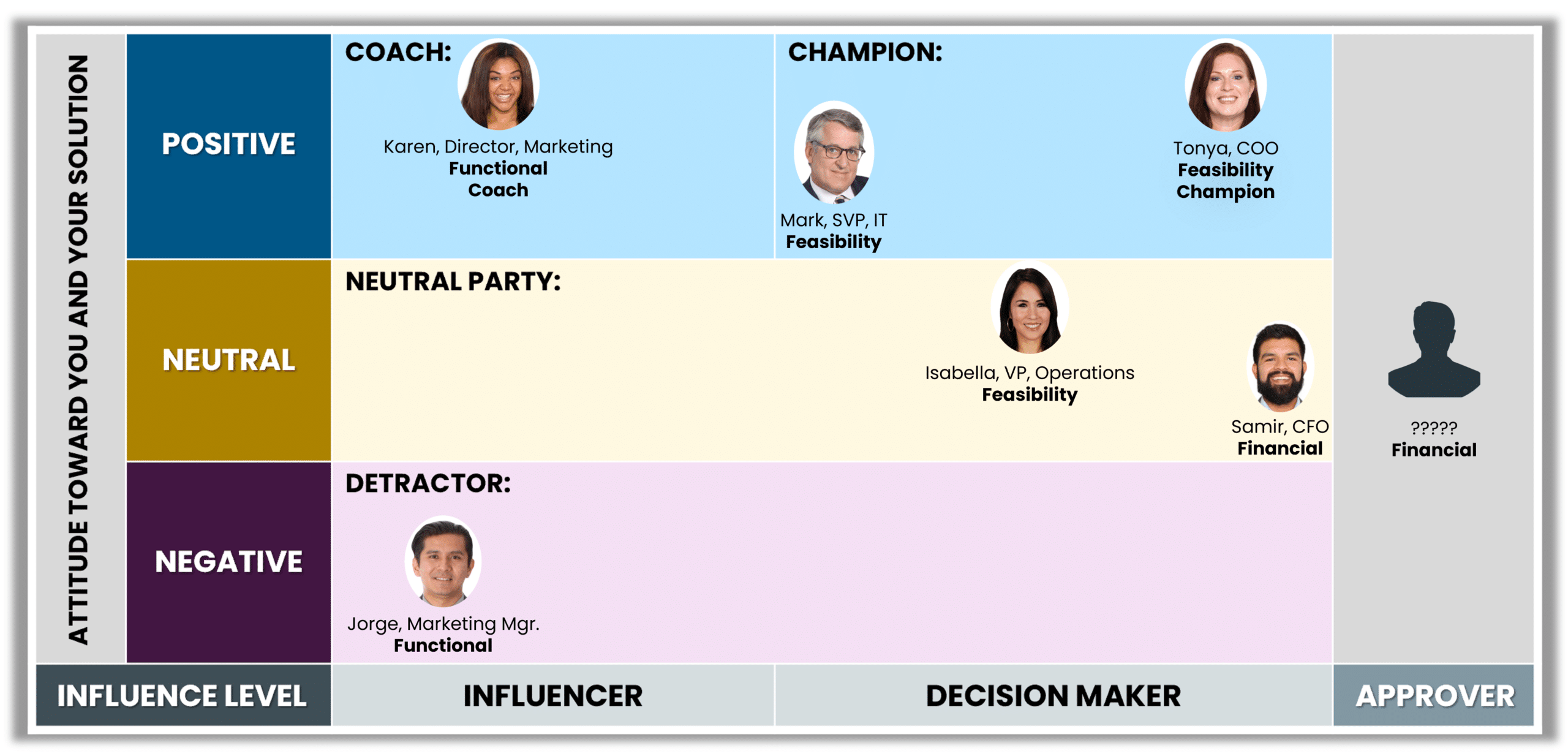I’ve said many times that while the actions of other leaders or departments can hurt an organization, no other function can save a company if its sales force does not perform. This makes the investment in sales effectiveness a wise one, for company leaders who want to secure their place in the future of distribution.
The Nuances of Sales Process in Distribution
While there may be other nuances, and there are certainly a variety of sales models with ecommerce, inside and outside sales (often with omnichannel crossover), two common sales processes in distribution involve the sales force.
They are:
- A transactional sales process that starts with supplier selection (which is more like the below consultative, complex sales process) but segues to transactional order flow (meaning: order, stock, use or resell, replenish inventory, and repeat in a loop).
- A consultative sales process to select or design a solution to solve a specific challenge or enable a specific opportunity. This is generally a complex sale with multiple decision-makers, over a timeframe. The solution is purchased and implemented.
And to layer additional nuance, sometimes both sales processes coexist inside a single distributor.
This article will focus on supplier and solution selection. The improvement of transactional order flow (upsell, cross-sell, maximizing market basket diversity) is a function of good account management, not opportunity management.
NOTE: Cross-selling may be the exception for some customers, especially when it involves selling across divisions or business units to new decision-makers. In those cases, it is more like the initial supplier selection process than transactional order flow.
Wise CEOs and senior sales leaders are mapping all processes as part of their sales transformation initiatives. And, based on their foundation of buyer acumen, they align their processes to the buyer’s journey to reduce friction and enable the smoothest possible buying process. This alone will usually improve win rates for supplier selection or solution selection, but there is much more that can be done purposefully and consistently to improve the effectiveness of your opportunity management practices and increase sales velocity and your win rates.
Improving Opportunity Management
Starting with that foundation and assuming those things have been done or will happen, let’s dig in to improving the quality and effectiveness of opportunity management.
Some Foundational Prerequisites
- A buyer-centric mindset: A deep understanding of the buyer’s perspective is essential. This requires empathy and a commitment to meeting their needs and solving their problems. According to studies by both Forrester and CSO Insights, organizations that prioritize a buyer-centric approach achieve higher win rates.
- A consultative approach: Approach each sales opportunity with a consultative mindset. Engage with potential clients to comprehend their unique circumstances, challenges and opportunities. This ensures need and solution alignment (NASA) and allows for the co-creation of tailored solutions that directly address the client’s needs.
- A focus on customer value: Emphasize value from the customer’s perspective. It’s not about listing product features but rather demonstrating how your solution solves the buyer’s specific problems. According to a study by Gartner, value messaging increases the likelihood of a purchase by 42%.
Conduct Superior Discovery
Conduct a Situation Assessment using a Current State and Desired Future State framework with COIN-OP (Challenges, Opportunities, Impacts, Needs, Outcomes and Priorities).
- Challenges: In the Current State, identify the buyer’s problems, obstacles, risks and whatever is holding them back from achieving their objectives. If applicable, document what they’ve tried and how well it worked (or didn’t).
- Opportunities: Explore their situation for any strategic opportunities they can or hope to capitalize on, but haven’t, or haven’t done successfully.
- Impacts: Understand the consequences of inaction – of not resolving the challenges or not capitalizing on the opportunities at hand.
- Needs: Identify the critical requirements of the buyer that are needed to close the gap between the two states.
- Outcomes: Define the desired results. What would success look like? How would it manifest, how could you measure it, and how would you know when you got there?
- Priorities: Determine what matters most to the buyers and how they prioritize the desired outcomes.

When using the framework, you’ll need to skip N (Needs) initially. With the Current and Desired Future States documented, then conduct a Gap Analysis between the Current and Desired Future States to develop the Needs, and an Impact Analysis between Current State Impacts and Desired State Outcomes and Priorities, to develop a compelling business case. (If they want an ROI analysis, you’d need to compare the gains to the cost of the solution needed to achieve those gains.)
When discovery is done this well, it fuels much of the rest of opportunity management. This article provides more detail on this critical skill: Discovery Skills + Patience = The Superpowers of Selling
Qualify Opportunities Wisely
In a complex sale with multiple decision-makers, where you will likely invest time, energy, money and other resources to win, it’s important to qualify opportunities to spend time wisely on deals you can win. At the same time, you don’t want to disqualify opportunities too quickly. In the very early stages, it’s often difficult to get all the facts you need from your buyers, to qualify accurately. It may take a few meetings, and some development of trust.
Speaking of facts, in Modern Sales Foundations, we teach the FACT model with NASA, for qualification.
- F = Funding: Ensure there is budget or acceptable credit for the purchase, or if there is not a specific budget, that funding can be obtained by those with whom you’re working.
- A = Alternatives: Understand the alternatives being considered. This could include competitors, the status quo (No Decision), or in some cases, DIY (doing it themselves).
- C = Committee: Ensure you are working with the right decision makers, influencers and/or approvers on the buying committee (and tied to F, above, that at least one of them can secure funding). This concept is often referred to as multi-threading. If your average opportunity for a specific solution involves five personas, and your current opportunity only includes two, this is a red flag worth exploring.
- T = Timing: Understand the timing in terms of both the timeframe (that it’s possible for you to meet it) and the urgency for the purchase decision. Is there a deadline or compelling event driving the purchase, or is it an open exploration with no defined timeline?
- NASA: As mentioned above, this stands for Need And Solution Alignment and is foundational for every opportunity. All of FACT could be in place, but if you don’t have the right solution to solve their challenge or enable their opportunity, your likelihood of winning is low, and you are not operating in your buyer’s best interest.
Manage Buying Process Exit Criteria

This attention to detail with the confirmation of satisfaction, by itself, can skyrocket your win rates. Most sellers sell the same way, to all decision-makers, every time, in every stage. Managing individual buying process exit criteria by stage is a game-changer and a significant differentiator.
Conduct Sales Call Planning
Ensure calls and meetings are planned with both your objective and backup objective, an agenda that will address the buyer’s objectives and exit criteria.
Set Sales Objectives: Clearly define the primary sales objective of the call, along with a backup objective in case circumstances change. This ensures that you remain focused and aligned with the buyer’s needs and are prepared for obstacles that may arise. According to a study by Gong.io, sales calls with well-defined objectives have a 20% higher success rate.
Address Buyer Objectives: In addition to your objectives, consider your buyers, as well. Ensure you craft an agenda that addresses your buyer’s objectives, exit criteria, and anticipates possible concerns. This demonstrates your commitment to providing value and understanding their specific challenges. Research by Sales Insights Lab also shows that sales reps who effectively address buyer concerns have a 37% higher win rate. This is all part of sales call planning.
Manage Meetings Effectively
Run meetings purposefully to meet objectives on both sides. To do this, facilitate and act like an orchestra conductor. Review the agenda, purpose, and objectives upfront and ask if anything has changed. Pay attention to timing, to ensure you have time at the end to review decisions, open items, next steps and any action plans with assignments and dates. According to a study by Doodle, well-orchestrated meetings are 34% more likely to achieve their objectives.
Implement the HAM-BAM approach (Have a Meeting, Book a Meeting) whenever possible. This strategy helps maintain momentum by setting clear next steps and scheduling the meeting while you’re together, to keep the buying process moving forward. Research by Salesforce indicates that maintaining momentum throughout the sales process can lead to a 15% increase in win rates.
Co-Create Solutions When Possible
Whether you can do this depends at least somewhat on what you sell, but whenever you can engage your buyers in decisions along the way that shape the final solution, it encourages their ownership and buy-in to the solution. This collaborative approach not only leads to a better-fit solution but also strengthens the buyer’s commitment to the chosen path. According to a study by CEB, buyers who are actively involved in the decision-making process are 60% more likely to be satisfied with their purchase.
Communicate Value from Your Buyers’ Perspective

That may require speaking about the same solution differently, to different decision-makers. This ensures that each stakeholder sees the value of your solution in terms that are meaningful to them. Because most sellers speak about their solutions in the same way, each time, to every buyer, this is another huge opportunity for differentiation. According to a study by McKinsey, organizations that effectively communicate value to multiple stakeholders experience a win rate that’s 20% higher.
Diagnose & Navigate the Buyer Landscape

Gain Commitment Purposefully
Guiding the buyer towards commitment is a pivotal step in the sales process.
Plan to gain commitment purposefully, both for interim steps and final purchase commitments. Sellers who do this purposefully, authentically and without any hint of closing techniques from the past have a higher degree of success.
Conduct a NASA Reality Check: Before gaining commitment, this step occurs solely in the mind of the salesperson. It’s just a reality check that you still have NASA, or Need And Solution Alignment, and that what you are about to recommend, truly is in your buyers’ best interest.
Review Benefits and Value: Review the accepted benefits, exit criteria and value with the buyers. This reinforces the positive aspects of your solution and helps solidify their decision. According to a study by Brevet Group, sellers who effectively communicate value during the decision-making process achieve a win rate that’s 24% higher.
Suggest a Logical Next Step: Recommend a logical next step in the buying process, whether it’s the next interim step forward or the request for a purchase decision. This provides a clear path forward and maintains the momentum of the sale. Research by SalesLoft indicates that sales reps who guide buyers through a structured process have a win rate that’s 29% higher. For added influence, use storytelling with Ethos, Pathos, and Logos (establish credibility, make an emotional appeal, justify with logic).
Ask for Commitment: Ask for the buyer’s commitment to move forward, whether it’s for an interim step or the final purchase decision. This clear call to action reinforces their intention to proceed. According to a study by Gong.io, sales reps who proactively seek commitment have a win rate that’s 16% higher.
Closing Thoughts
As with my previous article on new business development in distribution, there is more to this topic than will fit into a single article. This is an effective set of steps, though, and does produce reliable results when well executed. As I said last time, if you get this only 70% right, it will be 100% better than those who did nothing. As Peter Drucker said:
“Doing the right thing is more important than doing the thing right.”
Get started. Do your best. If you need help, or have questions, reach out. And even if you don’t, I’d enjoy hearing about your successes, if this article helps you.
Other Related Posts:
I mentioned several articles throughout this one, but here are some others that might be helpful, as well.
- One Size Does Not Fit All: Stop Force-Fitting Sales Model, Process, & Methodology
- How Do B2B Sellers Need to Adapt to Modern Buyers?
Mike Kunkle is an internationally recognized expert on sales enablement, sales effectiveness, sales training, sales coaching, sales management, and sales transformations.
He’s spent over 30 years helping companies drive dramatic revenue growth through best-in-class enablement strategies and proven effective sales systems.
Mike is the founder of Transforming Sales Results, LLC where he designs sales training, delivers workshops, and helps clients improve sales results through a variety of sales effectiveness practices and advisory services.
He collaborated to develop SPARXiQ’s Modern Sales Foundations™ curriculum and authored their Sales Coaching Excellence™ and Sales Management Foundations™ courses.
Mike's book, The Building Blocks of Sales Enablement, is available on Amazon, with others coming soon in 2026, starting with The CoNavigator Method for B2B Selling.


1 thought on “How to Improve Opportunity Management & Increase Win Rates”
Great content!